|
|
The choice of the site of Nogent-le-Roi, in the Thymerais, on the edge of Beauce, may seem surprising to install an 800 KVA wind turbine, because it is quite obvious that the quality of wind energy available per square metre in this region is low compared to other French regions that are much windier, such as the Atlantic coast, the Channel coast or the Languedoc coast.
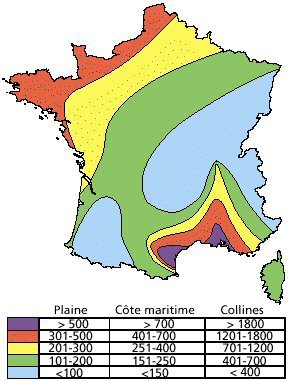
Average wind power, in Watts
for one m2 of vertical section taken at 50 m from the ground.
(Source : Agence De l'Environnement et de la Maîtrise de l'Énergie)
For example, in Eure-et-Loir, at 40 meters above the ground level, the "wind energy wealth" or "wind potential" is on average 1,000 kW/h per m2 per year. This same potential is 6,000 kW/h/m2/year in Cotentin, 5,000 in Etretat and 4,000 in Ouessant and Languedoc.
|
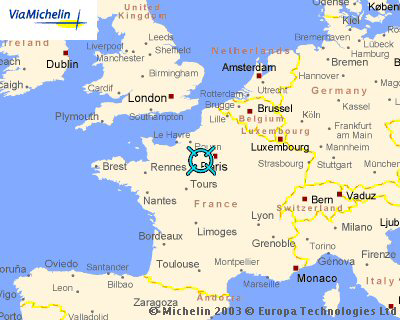
|
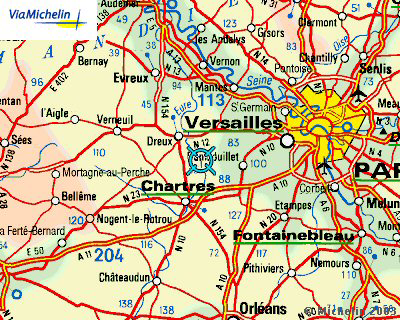 |
Nogent-le-Roi is located 70 km west of Paris and 50 km from Versailles,
in a triangle formed by Rambouillet, Dreux and Chartres (map below left).
The experimental station was located 2 km from Nogent along with the D148 road ((map below right).
|
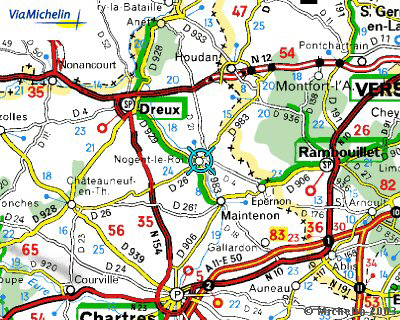 |
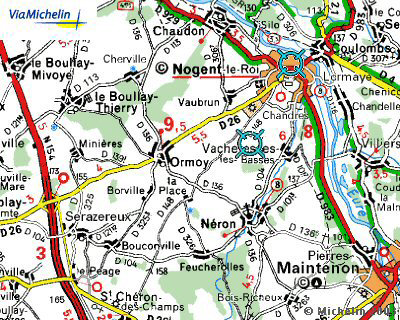 |
| Maps : © Via Michelin |
However, the choice of this location was not random. It took many factors into account:
- The aim of the experiment was not to achieve KiloWatt production performance but to verify knowledge of a pre-industrial machine, which had never been carried out in France on this scale.
- It was also necessary to verify the behaviour of the materials and, above all, this machine with a power close to one megawatt was, in the minds of its designers, only an intermediate stage towards a larger project (2 megawatts) planned to be installed in a much windier region where it was envisaged to produce 5 million kW/year.
- One of the steps to be taken was to design machines with fast propellers combined with slow alternators to eliminate at least one gear train and improve efficiency.
- The installation at Nogent-le-Roi was very complicated and could not be considered at the industrial stage because it required extensive and costly maintenance.
- The Thymerais region was interesting because the land was flat as far as the eye could see, with no major obstacles, so that the wind, although not very powerful, was of good aerodynamic quality.
- Nogent-le-Roi was at a reasonable distance from Paris, i.e. from the BEST and the EDF Research Department.
- The chosen location allowed for an easy electrical connection of the research station to the SNCF substation in Maintenon.
- Finally, Nogent-le-Roi offered - and still offers - a certain number of industries that were put to use. The town also had the necessary hotel and restaurant capacity to accommodate the many engineers and technicians who were present during the construction and development of the wind turbine.
|
|




